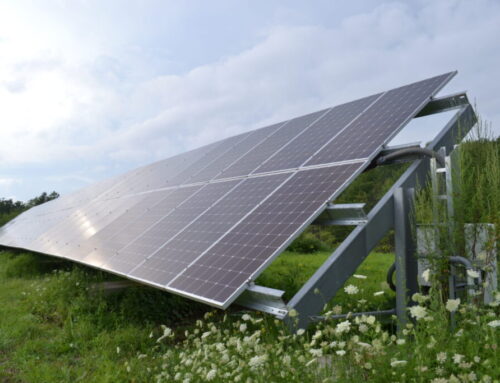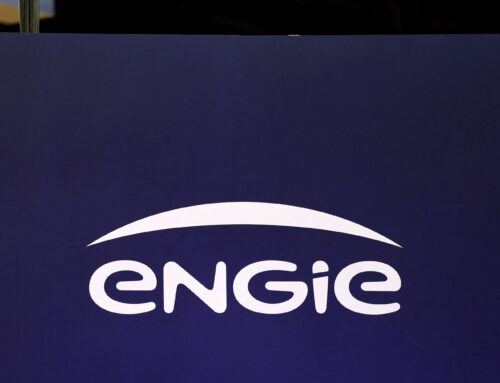The Senate Just Put Clean Energy for AI in the Crosshairs
July 1, 2025
After more than a day of continuous debate, the US Senate passed its version of the budget megabill Tuesday afternoon—with potentially disastrous implications for the future of renewable energy in the country.
Among a barrage of bad news for climate initiatives, including a new tax credit for coal and the sunsetting of electric vehicle tax credits, the bill forces an aggressive cutoff for tax credits for wind and solar. The bill ends credits for projects placed in service—a term meaning, essentially, that a project is ready to provide power to the grid—after 2027, putting hundreds of planned projects around the country in jeopardy.
“This is a bill to punish renewables,” says Costa Samaras, a professor of civil and environmental engineering at Carnegie Mellon University. “There is a real need to add clean energy supply to the grid—electrifying our cars, electrifying our homes, electrifying our buildings, electrifying our factories, and the demands from AI are all going to require new clean energy. What this bill does is make it harder and more expensive.”
Incredibly, the original version of the bill presented Monday evening was even worse news for renewables. That text contained a new tax on wind and solar which would have taxed businesses that source material from certain foreign countries, including China—a charge that would have, in essence, kneecapped both industries. The new text also gives a little bit of leeway to projects that start construction within the next year, allowing them to keep tax credits even if they are not placed in service by the 2027 deadline.
President Donald Trump, who has a long-held animus for windmills, campaigned on ending the Inflation Reduction Act, and the original House bill made good on that promise. But the more extreme last-minute additions made over the weekend in the Senate text alarmed energy analysts, environmentalists, labor unions, Silicon Valley technocrats, and even some Senate Republicans.
The addition of the excise tax, in particular, seemed to have been a total surprise. As NBC reported Monday, several GOP Senators said they had no idea who added in the provision.
Alex Epstein, an energy “philosopher” who has pushed a narrative around fossil fuels being essential for “human flourishing” and who has been an influential voice for Republicans in crafting the end of the IRA tax credits, claimed on X this weekend that he did not support the excise tax.
Elon Musk, whose businesses have benefited from a variety of climate and clean energy-related tax credits, posted a barrage of tweets Sunday and Monday disparaging the renewable energy provisions of the bill.
“The latest Senate draft bill will destroy millions of jobs in America and cause immense strategic harm to our country!” he wrote. “Utterly insane and destructive. It gives handouts to industries of the past while severely damaging industries of the future.”
According to Politico, Trump reportedly pushed Senate leadership last week to craft a text that was more aggressive in phasing out tax credits for renewables than the version of the bill passed in the House. “I HATE “GREEN TAX CREDITS” IN THE GREAT, BIG, BEAUTIFUL BILL,” Trump posted on TruthSocial in late June, launching into a paragraph-long, error-ridden rant on renewable energy.
Even without the industry-ending excise tax, experts still say that the forced retirement of the tax credits blows up valuable investment in projects already in the pipeline. Since the beginning of the year, the clean energy industry has felt the pressure of looming IRA rollbacks. According to an analysis from energy NGO E2, around $15.5 billion in investment in new clean energy projects and factories has been lost since the start of the year, including more than $9 billion in Republican congressional districts.
The intense hostility for solar and wind coming from the Trump administration may seem, to a logical person, to be at odds with its goal of “energy dominance.” Energy experts say that renewables—particularly when paired with batteries—are helping to bolster the US grid as energy needs soar. Texas, for instance, added more solar and battery storage than any other type of energy to its grid last year. As of this spring, wind and solar combined made up 42 percent of Texas’s installed generation capacity, more than any other state in the US. All that new solar and storage has, in turn, helped the grid stay stable during peak use, lowering the risk of blackouts during the first heatwaves of the summer—even as Texas faces never-before-seen summer demand this year, thanks to hot temperatures and the addition of energy-thirsty data centers. Yet in an op-ed published in the New York Post last week, Energy Secretary Chris Wright said that wind and solar contribute to a “less stable grid.”
Doug Lewin, an energy analyst based in Austin, points out that solar and batteries are particularly well-positioned to help out with grid demand during heatwaves, when the sun is shining—and people turn on their air conditioners.
“We’re just in this situation where we are going to need massive amounts of power to deal with the heat,” he says. “We’ve gotta have air conditioning to keep people healthy and safe during these hellacious summers, which are getting worse. That’s just an objective matter.”
It’s particularly ironic to see these kinds of pushbacks as the Trump administration goes all in on artificial intelligence, which, by some projections, could comprise nearly 12 percent of US power demand by the end of the decade. Right now, a global backlog in gas turbines is spelling trouble for those looking to scale up fast. Turbine producers like GE Vernova say they’ve already filled orders for the next few years, and project it may take several years for new customers to get their hands on a completed turbine. In April, the CEO of renewable and utility giant NextEra Energy told shareholders that he expects renewables to act as a “bridge,” helping to bolster the grid and buy time until bigger gas projects can come online.
But even with the promise of AI using up every spare electron on the grid, the cultural backlash to renewables is as strong as ever—and it isn’t isolated to the White House. Despite Texas’s reliance on renewables, the state legislature battled over several bills this past session that would have seriously kneecapped solar and wind development in the state. Oklahoma, which relies on wind energy for a third of its energy needs, faces a growing movement to ban renewables altogether. Across the country, local governments, responding to grassroots movements, are pushing back against wind and solar projects on their land. (It’s important to note that many of these movements often include Democrats.)
Lewin, who wrote about Texas’s legislative drama in detail this year in his newsletter, says it’s too simplistic to ascribe the hostility towards renewables as simply being funded by Big Oil. According to Politico, Alaska Senator Lisa Murkowski, who has received hundreds of thousands of dollars in campaign donations from oil and gas interests over the course of her career, was an instrumental figure in changing the final Senate language to remove the excise tax. In Texas, the oil and gas lobby united with renewables to defeat a bill that would have made energy prices higher by increasing costs for wind and solar.
“It feels like you’ve got a large number of really powerful folks who have just decided, or been convinced—and then had that belief reinforced by algorithms over and over—that somehow, wind and solar are the root of all evil and are causing every problem,” Lewin says. “It’s bizarre. It’s really hard to kind of understand this animus for technologies that have had a huge benefit.”
Search
RECENT PRESS RELEASES
Related Post



